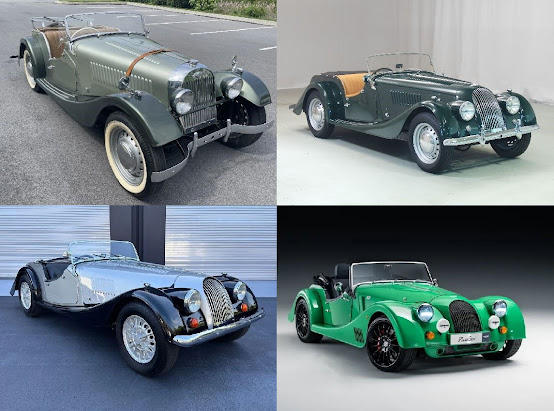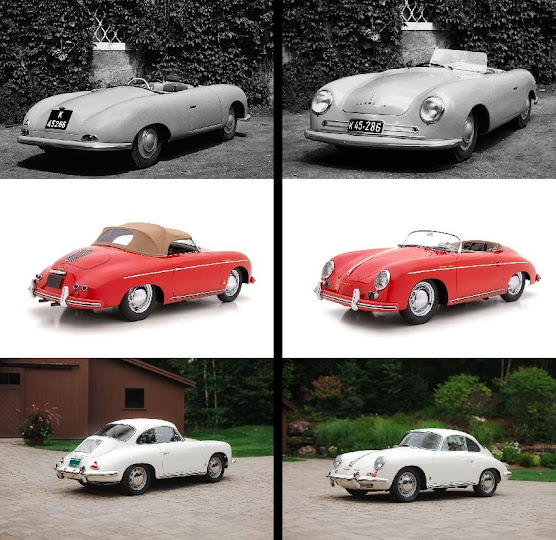Skeuomorph (pronounced skyoo-uh-mawrf)
(1) An
ornament or design on an object that mimics the form of the object when made
from another material or by other techniques, usually one that reflects a
previously functional element.
(2) In
digital technology. a design or design element, as an icon on a digital device,
that mimics the three-dimensional look or the sound of a physical object, even
if that object is obsolete.
1889:
The construct was the Ancient Greek σκεῦος (skeûos) (implement, tool, vessel) + μορφή
(morphḗ) (shape; form),
modeled after the earlier zoomorph (resembling an animal) and phyllomorph
(resembling a plant). The
suffix -morph was appended to words to denote “of or pertaining to shape or
structure”. Skeuomorph
& skeuomorphism are nouns, skeuomorphic is an adjective and skeuomorphically
is an adverb; the noun plural is skeuomorphs.
Magic Cap's start-up screen (1994).
The
classic desktop metaphor, built with skeuomorphs, which was the start-up screen
for the Magic Communicating Applications Platform (1994-2001 and commonly known
as Magic Cap), an operating system for personal digital assistants (PDA)
constructed wholly in the object oriented programming (OOP) model. Loaded with good ideas and ahead of its time,
Magic Cap failed because the planet's communication infrastructure was neither
robust enough or sufficiently fast to realize the OS's possibilities. Additionally, even as things evolved, there
was never enough inter-operability with other systems and services which had
achieved critical mass.
A skeuomorph is a design element in an object which mimics the design of a similar object
made from another material or serving another function; it can thus be
considered a derivative object which retains visual cues from the original
object. Quite when the idea emerged of
the skeuomorph as something which consciously and deliberately “carries over”
an earlier motif for some purpose beyond the functional is uncertain but in
engineering and architecture, the technique pre-dates Antiquity. Because architectural generations (expressed
usually as eras or epochs) tend to extend over at least several human
generations, what comes to be defined as “attractive” or “elegant” can become
well-established but as technological advances make possible structures which
are bigger, taller or able to be created with different materials or in
different shapes, it had been common for motifs like familiar visual elements to
be (explicitly or in detail) to be included in the new. It softened the shock of the new. In domestic architecture, this continues to
this day, much to the disgust of architects who are appalled at the mash-up of
influences which can appear in a McMansion (in which there will be chandeliers
with electric bulbs emulating wax candles; a classic skeuomorph) but since
modernity was delivered with the twentieth century, in big buildings and
representational architecture, the shock of the new seems to have become the
objective and skeuomorphs are regarded as sentimental or worse: bourgeois.
Instagram’s old skeuomorph (left) and the new flat logo (right).
In 2018
Instagram switched its logo from a skeuomorph UI to a flat UI. It was a move which at the time surprised
many because the retro brown and cream camera with a rainbow stripe (a nod to
the Polaroid cameras which were such a symbol of the late twentieth century)
had become instantly recognisable but the company insisted the new design
reflected how the app had changed. When first released (as Burbn), the app was
used almost exclusively for its photo filters and effects that lent digital
images a “retro edge”, the dominant pattern of use then to use Instagram as handler
to edit images which were then uploaded to a platform such as Facebook or X (then
known as Twitter). However, Instagram
clicked with generation brought up on short-form content and static images and
became suddenly a massive social phenomenon.
So, the logo changed because as the company put it: “We've been inspired
by all the ways the community has grown and changed, and we wanted to create
something that reflects how vibrant and diverse storytelling on Instagram has
become”. Exactly how all this was
reflected in the new logo was neither immediately obvious nor expanded on by Instagram
but the point probably was just that it was changed, the medium being the
message. In 2012 Facebook bought
Instagram for US$1 billion which now sounds a bargain but back then, a billion
US$ was still a lot of money.
Skeuomorphs in action: The Lindsay Lohan Quiz for iOS.
In the
more ephemeral world of screen icons, graphical user interfaces (GUI) and app
design where the life of a design can be closer in duration to that of the
premiership of Liz Truss (b 1975; UK prime-minister Sep-Oct 2022) than
something like Westminster Abbey, skeuomorphs proved popular because instantly
they could adopt symbols which were unambiguous and universally understood; the
sense of continuity with the past really wasn’t important at all, the
retro-look just amusing. Although using
a representation of an old-style rotary-dial telephone on a screen icons does
sound paradoxical, it made sense because the symbol was internationally
recognized whereas were an image of cell phone (mobile) to be used, it would
not have worked as well because it could be easily confused with a calculator
or some other rectangular device.
Equally, envelopes and mail-boxes were used where E-mail was involved
because nothing else could possibly be so evocative of “mail”.
Among software designers, the dominant theme in the early skeuomorphs was to create panels with a 3D appearance to gain some resemblance to physical buttons. This was at least partially because designers tend wherever possible to exploit to the maximum whatever is permitted by the medium which is their platform but it was also partly the persuasive utility of the skeuomorph itself. The alternative approach was the “flat design” which deliberately avoided imitating real-world textures or objects, a paradigm inherited from a school of art and design which rejected the idea of one thing imitation another. Imitation however thrived, thus smartphones have digital cameras which produce the audible sound of a mechanical shutter when a photograph is taken and note-taking apps may emulate the appearance (in 2D) of textured bond paper. The trends come and go and no approach has ever seemed to be dominant, both motifs (and hybrid forms) peacefully co-existing, frequently on the one device although in recent years things do seem to have moved to the darker and more minimalist.

















%20Music%20Video%202005.jpg)




